Acids and Bases - Dilutions and pH (A-Level Chemistry)
Buffer Action
Buffer Solutions
A buffer is a solution which can resist small changes in pH, restoring the pH to its original value.
Buffers only work when small amounts of acid or base are added: if large amounts are added then the buffer cannot cope and the pH will change significantly.
Buffers are commonly used in shampoos and biological washing powders.
Acidic Buffer Solutions
Acidic Buffers
An acidic buffer is made by adding a weak acid to a solution of one of its salts (its conjugate base) like for example, ethanoic acid and sodium ethanoate (CH3COONa+)
The ethanoic acid is a weak acid and partially ionises setting up an equilibrium:
CH3COOH(aq) ⇌ CH3COO-(aq) + H+(aq)
The salt fully ionises:
CH3COONa → CH3COO-(aq) + Na+(aq)
The buffer solution contains lots of undissociated acid molecules and lots of salt ions of the acid from the salt solution, and enough H+ ions so that the solution is acidic.
Calculating pH of Acidic Buffer Solutions
For calculating the pH of a buffer solution you need the Ka of the acid in the buffer and the concentrations of both the acid and its salt. The following assumptions have to be made:
• Equilibrium and initial concentrations of the conjugate base are the same. The salt is assumed to dissociate fully.
• Equilibrium and initial concentrations of the weak acid are the same. The acid only dissociates slightly.
Worked Example: A buffer solution contains 0.05 mol of sodium ethanoate in a solution of 750 cm³ of 0.0500 mol dm-3 ethanoic acid. The solution is at 298 K. Calculate the pH of the buffer solution formed (3 marks). ![]()
Step 1: Calculate the concentration ethanoate ions (1 mark)
Concentration of ethanoate ions = moles/ volume = 0.05/(750/1000) = 0.06 mol dm-³
Step 2: Calculate the H+ ion concentration using Ka (1 mark)

Rearrange and substitute in values to find [H+]

Step 3: Calculate pH (1 mark)

Making a Buffer of a given pH
In order to work out the concentrations of salt and acid that have to be mixed in order to make a buffer of a specific pH, you just have to use the Henderson-Hasselbach equation:
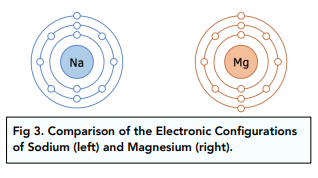
Worked Example: A buffer solution containing 1.20 mol dm-³ of sodium ethanoate salt and an unknown concentration of ethanoic acid is found to have a pH of 4.9 at 298K. What is the concentration of ethnic acid in the buffer solution?
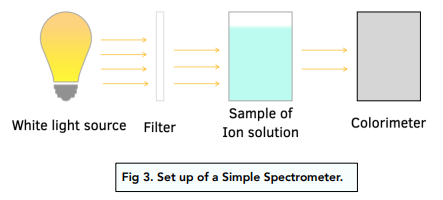
Step 1: Calculate pKa of ethanoic acid (1 mark)
Step 2: Substitute the known values into the Henderson-Hasselbach equation (1 mark)
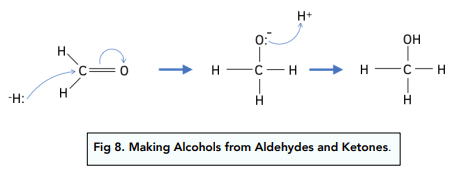
Step 3: Rearrange the equation to find the unknown value (1 mark)

Adding an Acid to an Acidic Buffer
When H+ ions are added to the acid buffer, they combine with some of the large quantity of ethanoate ions to make more undissociated acid molecules.

As a result:
• The amount of salt ions decreases. Excess ethanoate combine with the extra H+ to form undissociated ethnic acid.
• The amount of undissociated acid increases. A H+ combines with ethanoate ions, more undissociated ethnic acid forms.
• The pH stays more or less the same. The extra H+ added immediately combine with the ethanoate ions and so the pH hardly changes.

Worked Example: A buffer solution contains 0.05 mol of sodium ethanoate in a solution of 750 cm³ of 0.0500 mol dm-³ ethanoic acid. The solution is at 298 K.
7.5 cm³ of 2 mol dm-³ of hydrochloric acid is added to this buffer solution. Calculate the pH of the solution formed. (5 marks)

Step 1: Calculate the moles of hydrochloric and ethanoic acids (1 mark)
Moles of hydrochloric acid = 7.5/1000 x 2 = 0.015 mol
Moles of ethanoic acid = 750/1000 x 0.05 = 0.0375 mol
Step 2: Calculate the moles of ethanoate ions after the addition of HCl (1 mark)
When H+ ions are added to the buffer, they react with some of the ethanoate ions from the salt solution:
The mole ratio of H+ : CH3COO- = 1:1
Ethanoate ions are used up in the reaction, and decrease by the same number of moles of acid added.
Moles of ethanoate ions = 0.05 – 0.015 = 0.035 mol
Step 3: Calculate the new moles of ethanoic acid molecules (1 mark)
More ethanoic acid is made when H+ ions are added.
Mole ratio of CH3COOH: H+ = 1:1 from equation 1
Moles of ethanoic acid = 0.0375 + 0.015 = 0.05 mol
Step 4: Calculate the H+ ion concentration using Ka (1 mark)
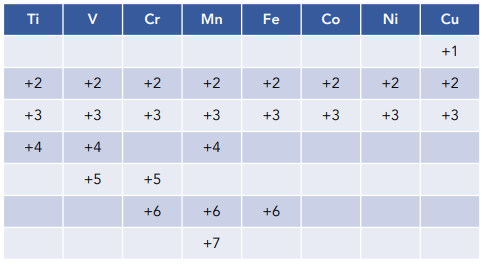
Rearrange and substitute in values to find [H+]
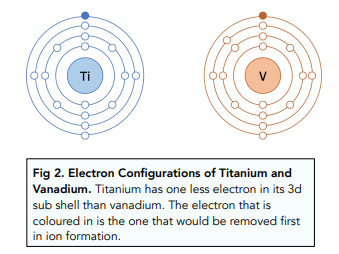
Step 5: Calculate pH (1 mark)
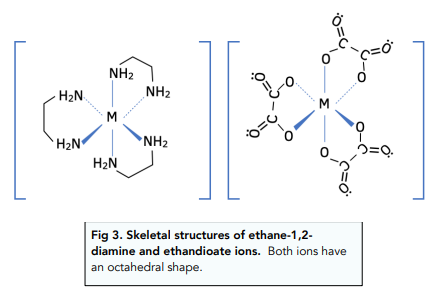
Adding a Base to an Acidic Buffer
When OH- ions are added to an acidic buffer, they react with the H+ ions produced from the dissociated acid molecules. As the H+ ions are used up, the equilibrium shifts to the right.
For example with an ethanoic acid and ethanoate ion buffer:
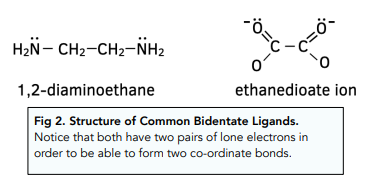
As a result:
• The amount of undissociated acid decreases. As the position of equilibrium shifts, more undissociated acid is dissociated to replace the H+ ions
• The amount of salt ions increases. As more undissociated acid is dissociated to replace the H+ ions, more ethanoate ions are produced.
• The pH stays more or less the same. The extra OH- added immediately combine with the H+ ions in solution, which are quickly replenished as the position of equilibrium shifts to the right.
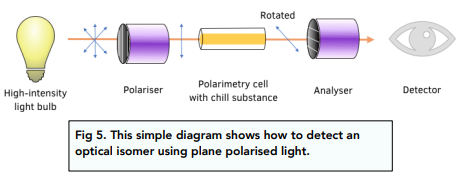
Worked Example: A buffer solution contains 0.05 mol of sodium ethanoate in a solution of 750 cm³ of 0.0500 mol dm-³ ethanoic acid. The solution is at 298 K.
7.5 cm³ of 2 mol dm-³ of sodium hydroxide is added to this buffer solution. Calculate the pH of the solution formed. (5 marks)
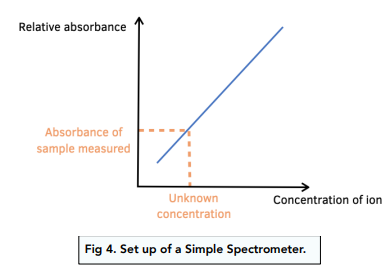
Answer:
Step 1: Calculate the moles of sodium hydroxide (1) and initial moles of ethanoic acid (1 mark)
Moles of sodium hydroxide = 7.5/1000 x 2 = 0.015 mol
Moles ethanoic acid = 750/1000 x 0.05 = 0.0375 mol
Step 2: Calculate the moles of ethanoic acid after the addition of NaOH (1 mark)
When OH- ions are added to the buffer, they react with hydrogen ions from the dissociated acid molecules.

The mole ratio of H+ : OH- = 1:1
So moles of H+ ions reacting = 0.015 mol = moles of ethanoic acid molecules dissociated.
Ethanoic acid molecules, therefore, decrease by the same number of moles of base added.
Moles of ethanoic acid = 0.0375 – 0.015 = 0.0225 mol
Step 3: Calculate the new moles of ethanoate ions (1 mark)
More ethanoate ions are made is made when OH- ions are added. The equilibrium reaction shifts to the right as H+ ions are used up, producing more ethanoate ions.
Mole ratio of CH3COO- : H+ = 1:1 from equation 1
Moles of ethanoate ions = 0.05 + 0.015 = 0.065 mol
Step 4: Calculate the H+ ion concentration using Ka (1 mark)
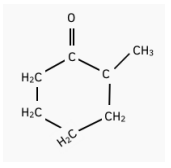
Rearrange and substitute in values to find [H+]
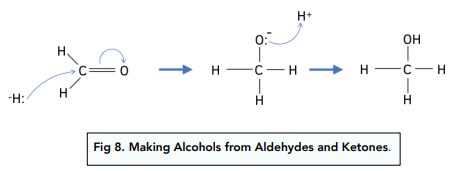
Step 5: Calculate pH (1 mark)

Buffer Action in Blood
Human blood is kept at a pH between 7.35 and 7.45 by the buffer action of carbonic acid (H2CO3) and bicarbonate anions (HCO3-). Two equilibriums are set up:

This is how the buffer system in blood works:
• If [H+] rises – Excess H+ reacts with HCO3- ions causing the first equilibrium to shift to the left. As a result [H+] stays close to its original value so that blood pH does not fall.
• If [H+] falls – More H2CO3 molecules dissociate causing the first equilibrium to shift to the right and more H+ to form. As a result [H+] stays close to its original value so that blood pH does not rise.
CO2 and hence H2CO3 concentrations are regulated by respiration whilst HCO3 concentrations are regulated by the kidneys, so that any excess HCO3 gets excreted in urine.
Basic Buffer Solutions
Basic Buffers
Basic buffers have a pH greater than 7. They are made by adding a weak base to its salt. For example, ammonia solution and ammonium chloride act as a basic buffer.
The salt fully dissociates:

The ammonia solution partially dissociates:

The buffer solution contains lots of undissociated base molecules and lots of salt ions of the base from the salt solution, and enough OH- ions so that the solution is basic.
Adding an Acid to a Basic Buffer
When H+ ions are added to the basic buffer, they combine with OH ions released when the ammonia molecules dissociate. The equilibrium shifts to the right to replace the OH- ions.
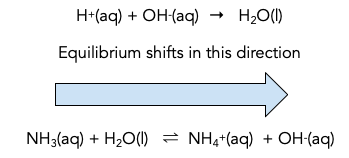
As a result:
• The amount of undissociated ammonia decreases. As the position of equilibrium shifts, more undissociated ammonia is dissociated to replace the OH- ions
• The amount of ammonium ions increases. As more undissociated ammonia is dissociated to replace the OH- ions, more ammonium ions are produced.
• The pH stays more or less the same. The extra H+ added immediately combine with the OH-
ions in solution, which are quickly replenished as the position of equilibrium shifts to the right.
Adding a Base to a Basic Buffer
When OH- ions are added to the basic buffer, they combine with NH4+ ions from the salt, to make more undissociated ammonia molecules.

As a result:
• The amount of ammonium ions decreases. Excess ammonium ions combine with the extra OH- to form undissociated ammonia.
• The amount of undissociated ammonia increases. As OH-combines with ammonium ions, more undissociated ammonia forms.
• The pH stays more or less the same. The extra OH+ added immediately combine with the ammonium and so the pH hardly changes.





Still got a question? Leave a comment
Leave a comment